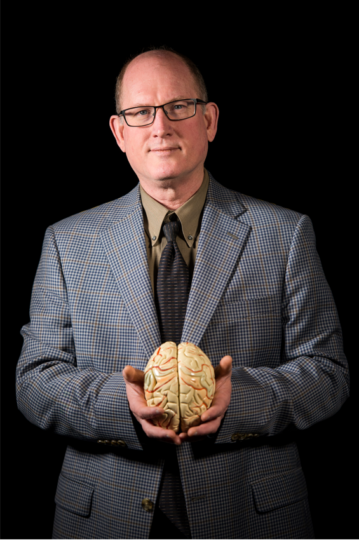Wondering how the brain develops over time? Dr. Jeff Snell from QLI Rehabilitation walks us through this, fact-checking cognitive programs, and discussing brain wellness.
Brain Development Questions and Answers
How does the brain develop or change over time?
The networks within our brain responsible for thoughts and actions, for recording memories—all of those networks are interconnections between the cells in our brain. Those neural networks are strengthened through practice, repetition, engagement. The physical, structural changes of those networks in response to practice and repetition are what we call “neuroplasticity.” The brain changes those connections in response to experience.
How does that differ from common ideas of the brain, intelligence and how we learn?
There was a general conception that once your brain finished developing in early adulthood, it was a static, unchanging object. The idea was, if you injured your brain, you lost those connections and they could never be reestablished. Neuroplasticity, as a concept, provides a better hypothesis for the functional improvements we see after a brain injury. The brain’s ability to heal is most reflected by its ability to change those neural connections to accommodate demands.
If you want to play golf, you can go get a bunch of golf clubs, but you might just use a baseball swing instead of a golf swing. That won’t be very helpful to your game. It’s why you hire a coach, to avoid bad tendencies while developing the right habits for your goals. The idea is to make good habits automatic, something that is achieved through repetition. The more you do something, the more automatic it becomes.
What is one of the biggest misconceptions about the human brain?
People say we use 10% of our brain. That probably comes from the fact that 10% of our brain is made up of neurons. At one time, the rest of the brain was generally considered to be the glue that holds everything together. Over time, science has demonstrated many complex functions that “glue” serves, and there is much more to be learned about glial cells. Despite that, the earlier perceptions that we only use 10% of our brains have certainly lingered!
There are a lot of products that claim to boost learning ability, memory and cognition. Is there any evidence that those are helpful tools?
There are many different computer-based cognitive training programs, and some have gotten into legal and financial trouble for making claims they couldn’t back up. If you play a brain game, you might get better at that brain game, but how are those skills generalizing to your real life demands? For a lot of these games, the underlying science is valid, but the claims they make—this will increase your IQ 20 points, for example—go beyond what they can actually demonstrate.
Are there general tools/tricks to boost their memory and clarity of thought?
Repetition always improves memory, but also the use of mnemonic devices—visualizing with language—helps you combine lots of information into a visual picture. Our visual memory is superior to our verbal memory; we recognize more faces than we remember names. We all know the colors of the rainbow because of Roy G. Biv. Shortcuts like this make information easy to recall.
What is worth keeping in mind for general mental wellness?
It’s important to remember that our brain is not separate from the rest of our body. Physiologically, it’s a part of who we are. There is a direct link between maintaining our cognitive abilities and maintaining our physical health. Exercise and use reasonable moderation when it comes to nutrition. Treat things that might lead to physical and cognitive decline—things like hypertension and high cholesterol. Your brain health goes with your body health. It’s not separate.
Categories: Brain Health, Neuroplasticity, QLI Magazine, Skill Acquisition

